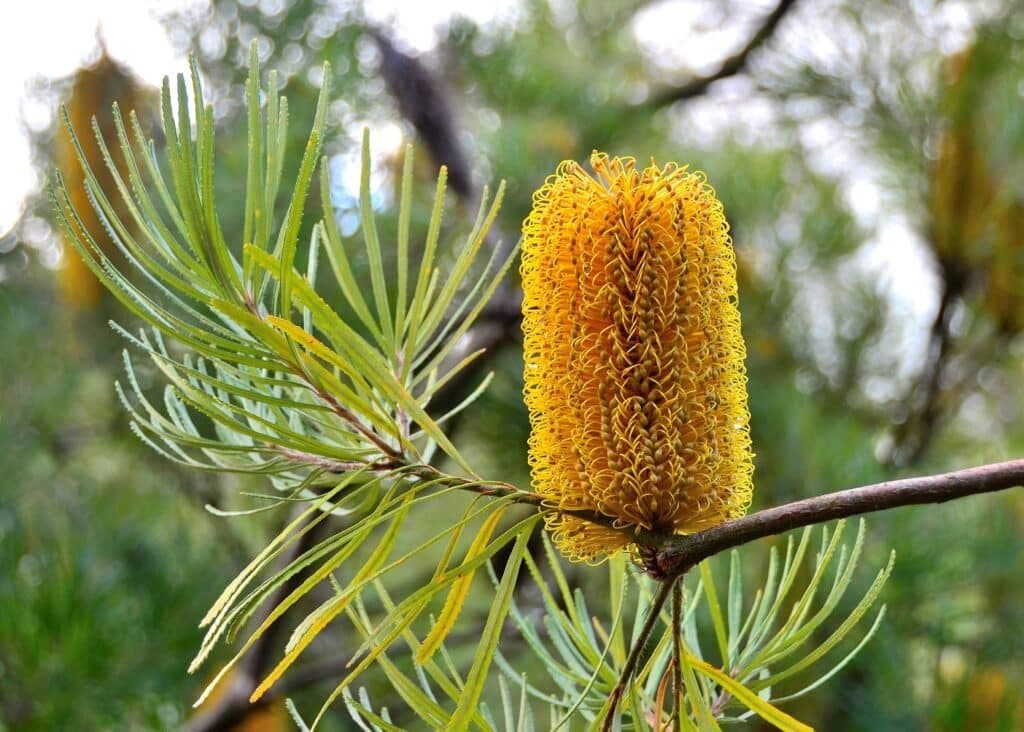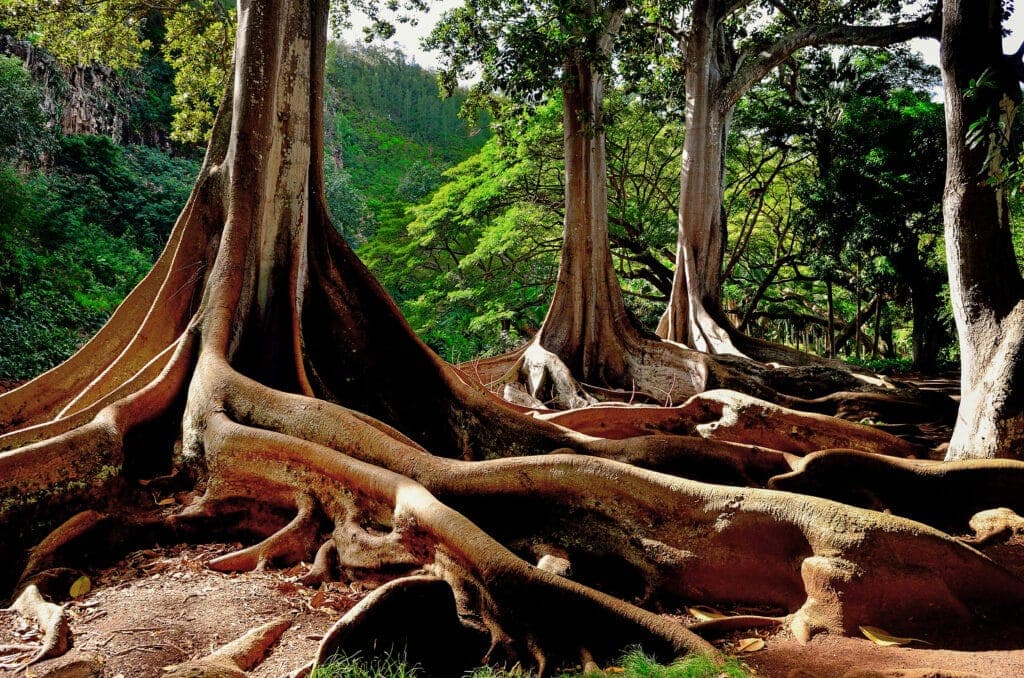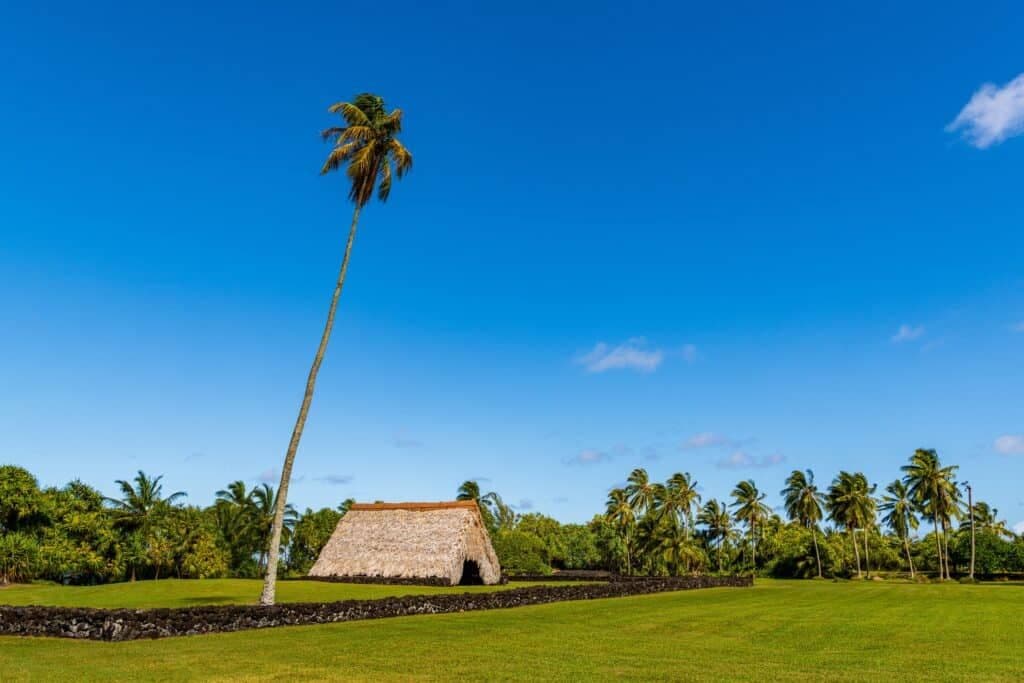By EJ Leonard
Nestled in one of Hawaiʻi’s most lush and ecologically diverse regions, the National Tropical Botanical Garden (NTBG) is a haven for plant lovers and nature seekers. Home to the world’s largest collection of native Hawaiian flora, it offers more than scenic strolls — it’s a living classroom, a conservation hub, and a tribute to Hawaiian cultural wisdom.
Wander through vibrant gardens surrounded by rainforests, and you’ll find endangered species being carefully protected, traditional plants once used in daily Hawaiian life, and educational displays that deepen your understanding of these islands’ natural legacy. It’s not just beautiful — it’s meaningful. With five gardens and several preserves across Kauaʻi and Maui, NTBG shares a story rooted in aloha ʻāina — a deep love and respect for the land.

Banksia spinulosa in Kahanu National Tropical Botanical Garden, Maui (Shutterstock)
The National Tropical Botanical Garden (NTBG) was founded in 1964 by an act of the U.S. Congress. The nonprofit has a unique mission: to study, conserve, and share knowledge about tropical plants. It remains the only botanical institution in the U.S. with a congressional charter focused exclusively on tropical plant life.
The urgency was — and still is — clear. Hawaiʻi is home to an astonishing number of endemic species, many of which exist nowhere else on Earth. But habitat destruction, invasive species, and climate change have pushed many native plants to the brink of extinction. NTBG stepped in as a steward, working alongside scientists, educators, and cultural practitioners to conserve not just species, but the deeper relationships between plants, people, and place.
NTBG’s work includes seed banking, habitat restoration, cultural interpretation, and the protection of canoe plant s —special species like kalo (taro), ʻulu (breadfruit), and niu (coconut) that were introduced by Polynesian voyagers and remain vital to Hawaiian culture and sustenance.

Hawaii Kauai Allerton Garden fig tree trunks (Shutterstock)
NTBG has three remarkable gardens on Kauaʻi’s South and North Shores: Allerton Gardens, known for its stunning landscape and historical significance, McBryde Gardens, home to the world’s largest collection of native Hawaiian flora, and Limahuli Garden & Preserve. Each has its own distinct ecology and story of stewardship.
4425 Lāwaʻi Rd., Kōloa | Open Tuesday through Saturday, 9 a.m. to 4:30 p.m.
Set within the lush greenery of Lāwaʻi Valley, Allerton Garden is an artful fusion of landscape architecture and botany. Once home to Queen Emma, the valley was later transformed by Robert and John Gregg Allerton into a dramatic tropical garden filled with fountains, sculptures, and iconic plantings — including the towering Moreton Bay fig trees in Jurassic Park.
While its celebrity trees are the biggest draw, Allerton Garden also protects a wide variety of native and exotic species. Its tours provide cultural and historical context, weaving together Hawaiian stories with the legacy of the land and its restoration.
4425 Lāwaʻi Rd., Kōloa | Open Tuesday through Saturday, 9 a.m. to 4:30 p.m.
Just up the valley is McBryde Garden, NTBG’s flagship conservation garden. Spanning 200 acres, it houses the world’s largest collection of native Hawaiian flora. Rare and endangered species thrive in this lush landscape, which also includes medicinal plants, food crops, and orchids. McBryde is home to the Breadfruit Institute, which promotes ʻulu as a climate-resilient food source across the tropics. Stroll the lush gardens and you’ll encounter traditional uses of native plants, alongside carefully restored agricultural terraces used in ancient Hawaiian farming practices. A convenient shuttle service makes it accessible for guests of all abilities.
5-8291 Kūhiō Hwy., Hā‘ena | Open Tuesday through Saturday, 8:30 a.m. to 4 p.m.
On Kauaʻi’s rugged North Shore lies Limahuli, where cultural heritage meets ecological restoration. This garden is nestled within a traditional ahupuaʻa — a land division that stretches from mountain to sea. Guided by Hawaiian stewardship principles, Limahuli is a living example of how Indigenous land management systems support thriving communities for generations.
Visitors walk through loʻi kalo (taro terraces), native plant zones, and restored forest areas, gaining insight into both natural and cultural systems. Interpretive signs and guides share stories of resilience, reciprocity, and regeneration. The garden also blooms the cultural significance of flowers and how Limahuli Garden preserves this through its exhibits and educational programs.

Kahanu Garden (Shutterstock)
While Kauaʻi hosts NTBG’s largest public gardens, the organization also maintains a vital presence on Maui through Kahanu Garden and Preserve, located just outside Hāna. The garden is renowned for its lush greenery, offering a picturesque and verdant environment. It also houses the world’s largest collection of native Hawaiian flora, showcasing its unique biodiversity and inviting visitors to explore its vast landscape.
650 Ulaino Rd., Hāna | Open Monday through Saturday, 9 a.m. to 2 p.m.
Tucked along the Windward Coast of East Maui, Kahanu Garden is home to one of the most important ethnobotanical collections in the Pacific. Canoe plants like ʻulu, banana, and sugarcane flourish here, grown not for show but for cultural preservation and education.
Kahanu Garden also emphasizes the cultural significance of flowers, preserving their roles in cultural practices and historical narratives. Kahanu is also the site of Piʻilanihale Heiau, the largest remaining ancient Hawaiian temple. Constructed over centuries from lava rock, this sacred site offers a powerful connection to the deep history of Hawaiian leadership, spiritual practice, and community.
Though less manicured than other gardens, Kahanu’s setting is striking — black lava fields, crashing surf, and the ever-present trade winds. The garden plays a key role in community resilience and food sovereignty through its partnership with the Breadfruit Institute.
Pro Tip: The Road to Hāna is winding and scenic and this is just one stop along the route. Plan for a slow, mindful journey, and give yourself time to explore the land fully.
NTBG’s mission extends far beyond its cultivated landscapes. The organization manages the world’s largest collection of native Hawaiian flora, protecting thousands of acres of native forest across the islands. These areas are often only accessible by helicopter or foot and serve as critical refuges for endangered species.
In these spaces, NTBG teams reforest slopes, propagate rare plants in nurseries, and safeguard genetic material in seed banks. But they don’t do it alone — partnerships with cultural practitioners and other nonprofits ensure that this conservation work is holistic and community-focused.
Tours: Each garden offers distinct experiences, from self-guided walking tours with QR codes to guided, in-depth docent tours. Visit ntbg.org to check schedules and book in advance — especially during peak travel seasons.
Weather: Rain is common, especially in Limahuli and Hāna. Wear sturdy shoes, bring a jacket, and consider bug spray. Trails may be slippery but are generally well-maintained.
Accessibility: McBryde Garden is the most accessible, with paved paths and a tram. Other sites like Limahuli, Allerton, and Kahanu are more rugged, with uneven ground and stone steps.
Best Time to Visit: Mornings and late afternoons offer cooler temperatures, softer light for photography, and fewer crowds.
Food: There are no restaurants inside the gardens, but you’ll find tasty options nearby. In Kōloa, close to Allerton and McBryde, try tacos at Da Crack, fresh poke from Kōloa Fish Market, or a cool treat from The Fresh Shave. Heading to Limahuli? Stop in Hanalei for snacks or a meal at Hanalei Bread Co. or Wishing Well Shave Ice. If you’re visiting Kahanu Garden in Hāna, bring your own food or look for roadside stands like Aunty Sandy’s Banana Bread, Hāna Farms, or vendors selling plate lunches and coconut candy.
What makes NTBG so special isn’t just its beauty — it’s its purpose. These are not ornamental gardens frozen in time, but evolving landscapes of learning, healing, and aloha ʻāina. It’s a place where science meets culture, and where each plant tells a story that connects its past, present, and future.
So when you visit, take your time. Let the scent of plumeria linger. Listen for the wind through kukui leaves. Understand that in Hawaiʻi, a garden can be an act of resistance, a celebration of resilience, and an invitation to remember our relationship with the land.
Join our newsletter for travel inspiration, insider tips and the latest island stories.
By subscribing, you agree to receive emails from Hawaii.com. You can unsubscribe anytime. See our Privacy Policy.